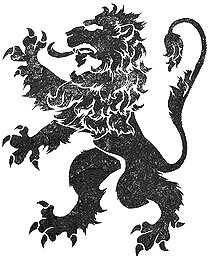The Perfect Trifecta of Primes
For anyone looking to take their photography to the next level, these 3 lenses are just what the doctor ordered.
The Nikon 35mm f/2D, 50mm 1.4D, and portrait master 85mm 1.4D
Hello, the purpose of today’s post is to convey how powerful this little trio of primes is. Lately I’ve found myself using my primes more and more, especially in the studio environment where the variables are more predictable. In this day and age of high tech and super-fast zooms, I often find that the upcoming and aspiring photographer quickly tends to overlook these classic primes. Make no mistake, the utility of a 70-200 zoom with a constant f/2.8 aperture cannot be overstated, but as mentioned in controlled environments, or where conditions can be somewhat predictable in the field-I would strongly encourage a rediscovery of the primes.
The new or aspiring photographer would also be remiss not to look into a life with primes due to the significant cost savings that can be had by going this route. With the average cost of a 70-200 f/2.8 VRII at $1,300 on the used market (if you’re lucky) and often quite a bit for a non VR 24-70mm, the advantages of quality primes quickly become apparent. Now don’t get me wrong I own and love all my f/2.8 zooms, but having used both extensively I can tell you that having and using primes can really build you a solid technical foundation that will carry over into zooms and throughout the rest of your photography. Like the author of this quick post tells-using primes forces you to see the world in front of you in a different way than you would with zooms. You move around more and aren’t as likely to fall into the trap of constantly zooming in and over-cropping the scene that lies before you.
All of the above primes are truly excellent and can be had for a very reasonable price (the 85mm f/1.4D notwithstanding)-we’re talking between $100-$150 for the 35mm f/2 and about the same maybe a little more for the 50mm-and even the legendary 85mm can be had for sub $600 if you’re savvy…. So all in for around 1k you have an arsenal of 3 lenses that can produce portraits comparable (if not superior in the hands of a skilled shooter) to any of those produced by the well known zooms!
A big reason why I am a proponent of building a foundation with primes is because it forces you to work on composure. I touched on this earlier but without the the zoom to fall back on we are forced to “zoom with our legs” so to speak! And in doing so you find yourself discovering different angles and viewpoints that you otherwise might not see. Another added advantage is the portability factor. With my 85mm mounted I can easily fit my 50 and 35 into one Think Tank bag and as long as wildlife or anything requiring more than 100mil of focal length isn’t in order you will be well prepared for a wide variety of shooting. This flexibility coupled with the low light capability these lenses offer are some of the big reasons I find myself reaching for them on my shelf more often than not these days.



In conclusion, before falling for the allure of the big and sexy zooms I would implore you to take a look at these D prime lenses. They might lack some of the latest and greatest features of the newer lenses such as vibration reduction, nano-coating, and some would argue a general better lens IQ (the latter being debatable in my opinion) you do pay a premium for all those features. And many of them (especially VR for these focal ranges) can be over-rated and frankly unnecessary. I would argue that many of the most compelling images ever recorded from the likes of Robert Capa, Elliot Erwitt, and Dorothea Lange were all captured on primes, and those images have stood the test of time and are still talked about today ∽











